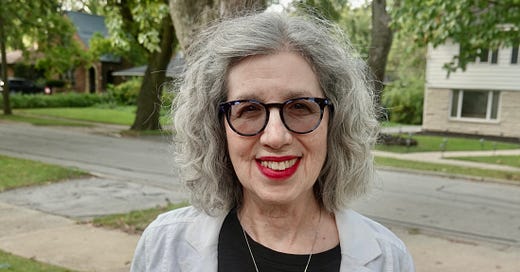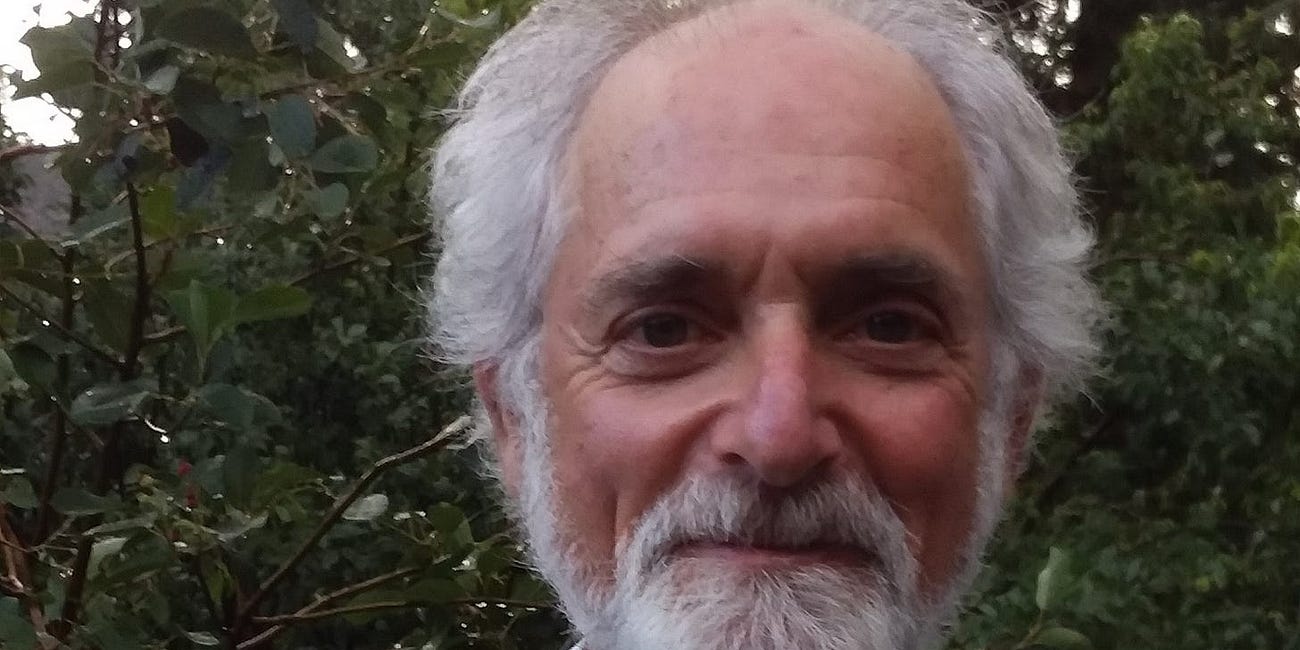(Editor’s note: My urologist told me: ‘Stress causes urinary symptoms. Many factors contribute, but (there’s an) established association between stress/anxiety and urinary symptoms.’ Today, we’ll focus on meditation as a tool to lower stress. Beverly Feldt wrote the article below to introduce beginners to the Insight Meditation path. Like most of here, she’s followed the cancer journey. Note: Bev is my sister-in-law. HW)
By Beverly Feldt
Vipassana meditation (often called Insight Meditation) comes from the oldest Buddhist tradition, Theravada, or the Way of the Elders. But you don’t have to be Buddhist to enjoy it!
Many people find that practicing this form of meditation on a regular basis can help with pain and anxiety. For people on a cancer journey (and I’ve walked that way myself), meditating can give us skills in staying with the present moment. We can learn to notice when we’re horribilizing our situation, projecting a grim future, or worrying about our life in general – and noticing is the first step to releasing these thoughts rather than pursuing them down a grim rabbit hole.
Sometimes beginners tell me, “I can’t meditate because I can’t clear my mind. No matter what I do, the thoughts keep coming.” I say, “Congratulations! You’re a human being, and you’re alive.” In Insight Meditation, we’re not trying to create mental blankness or any particular state. We just want to see what’s there, notice how our minds, bodies, and senses work.
Most of the time, in our daily lives, we take our thoughts and feelings for granted. We believe that they’re telling us the truth. Insight Meditation gives us a chance to test that theory by allowing us to focus on what’s happening now: to see our thoughts as thoughts (not as commands or eternal truths), and to learn how our feelings change from moment to moment. When you stop rushing around, sit down or walk slowly, and pay attention, insight arises naturally, all by itself.
Want to give it a try? Here are some instructions for beginners.
Let’s start with sitting meditation, which is the best-known form.
You can meditate with your eyes open or closed, whichever feels better to you. If you do choose to keep your eyes open, let your gaze rest easily on the floor a few feet ahead of you. Relax your eyes; be aware of your peripheral vision. Refrain from looking around at things.
Sit comfortably with your back straight, if you can. This balanced, upright posture allows you to breathe easily, and it also helps keep you awake! You can sit on a cushion on the floor with your legs crossed, kneeling on a meditation bench, or simply sit on a chair with both feet flat on the ground.
Decide beforehand how long you’re going to sit. You’ll probably want to set a timer. There are lovely meditation apps with bells to signal the end of your meditation period, but you can enlist Alexa to time you if you’d rather. The length of time you meditate isn’t as important as doing it regularly. You can start with five minutes, if that works best. Twenty minutes gives you a chance to settle in. Forty minutes is pretty standard. But it’s not a contest. The main thing is to stay with it for whatever length of time you decide, and not to cut it short because you’re uncomfortable, itchy, bored, or hungry. You want to sit there and notice just what it those things feel like.
It’s good for beginners to start by noticing the breath. The breath is always with you, so it’s useful to establish it as a focus. You don’t have to take deep breaths or change your breathing in any way. Just take a moment at the beginning of your meditation session to notice how it feels to breathe right now. Where do you notice the sensation most strongly? In the belly, rising and falling? At the edge of your nostrils? In the chest? Let your attention rest there, and stay with the changing sensations. Don’t describe them to yourself. Just experience them.
Uh-oh, you say. You suddenly realize you’ve forgotten your breath, and now you’re thinking about your 401K. Again, congratulations! Your brain is doing what brains do. Here’s how you handle it in meditation: as soon as you notice that your mind has wandered off, gently return to your focus. No need to beat yourself up, or analyze what happened, or decide you’re a terrible meditator. Just go back to the breath. The wonderful meditation teacher Sharon Salzberg points out that this very action of noticing that your mind has roamed away IS a moment of insight. And returning to the focus is like exercising a muscle, building your ability to concentrate and be ready for more insights.
Once you get the hang of noticing your breathing, you can widen your focus to include body sensations and thoughts. Notice your desire to stop, to adjust your posture, to scratch. Normally we follow those impulses, but now you’ll do an experiment: stay still. Notice what happens. Sometimes the desires get stronger; sometimes they go away on their own. You don’t have to scratch every itch. It’s interesting to see what happens when you don’t act automatically.
If pain arises, notice it. What exactly does it feel like in the body, and where? Instead of fleeing the pain, pay close attention. Is it a solid sensation, or does it shift around? Does it start and stop? You can do the same with anxiety, fear, joy, or any other feeling. You’ll learn a lot.
Notice the thoughts that come and go. They’re just thoughts! You don’t have to believe them. Do your thoughts say you’re doomed, that your cancer will get worse, that you’ve made a terrible mistake in your treatment plan? Notice the thoughts. Notice the feelings in your body as the thoughts come up. Do you tense up to drive them away? Do you put energy into arguing with them? Can you watch them as you’d watch clouds moving through the sky?
Those are the basic instructions. If you don’t like sitting, you can lie down, although you’re more likely to fall asleep that way. There’s also walking meditation, where you move slowly and pay attention to the sensations in your legs and feet as well as your breath. In all forms of Insight Meditation, use a light touch. It’s not a contest, not an endurance test, but a chance to try something different and pay attention to what your life is really like.
If you have the time and the money, there are Vipassana courses and retreats, and there are lots and lots of wonderful books. If you’d like to try a do-it-yourself retreat, I recommend Sylvia Boorstein’s book Don’t Just Do Something, Sit There. Other great teachers in this tradition are Jack Kornfield and Joseph Goldstein. Another approach to Vipassana was taught by S. N. Goenka, and his methods are taught in 10-day classes in many places around the world. And there are online lectures, groups, and information.
We can learn a lot about life and about ourselves by paying attention. Best of luck on your path!
Beverly Feldt is authorized through the Spirit Rock lineage to mentor beginners in Insight Meditation. She’s also a voice-over artist, lyricist, speaker for Unitarian Universalist congregations, and a partner in Workplace Interactors, a corporate training company.
Here are some related columns.
Tai Chi and Whole Body Health
(Editor’s note: I have been a fan of Tai Chi for more than 50 years. I learned about this extraordinary Chinese system as an undergrad at the University of Illinois in Champaign-Urbana when I saw a dance group perform Tai Chi. I tuned in on it as featured on the “King Fu” TV series. Shaolin Kung Fu, a martial art, is the “hard” form of Tai Chi. I studie…
High PSA, low Gleason score: Therapist talks about Active Surveillance,and how he handles emotional distress
(Editor’s note: Anxiety is not an uncommon problem in patients with low-risk prostate cancer. A recent study showed that over half of us on Active Surveillance are anxious. Ten percent say they are anxious all the time.
PCF Canada holding webinar on whether Gleason 6 is a cancer
The Prostate Cancer Foundation Canada and its Active Surveillance Support group are observing Prostate Cancer Awareness with a program on whether Gleason 6 lesions should even be considered a cancer at all.
Dr, Alejandro Berlin, a researcher and radiation oncologist at Princess Margaret Cancer Center in Toronto, will be the featured speaker at 7:30 pm Eastern on Thursday, Sept. 12. Register here: http://bit.ly/PCAM24-AS
Ale and I are members of the Gang of Six (on Gleason 6) that have been calling for renaming Gleason 6 as a non-cancer. We coauthored Low-Grade Prostate Cancer: Time to Stop Calling it Cancer, the most-read article in the Journal of Clinical Oncology in 2022. It sparked a controversy—and more papers.
Caregiver vs. care partner survey
I am still trying to sort out whether to use caregiver vs. care partner to describe who we patients with chronic disease obtain support.
Can you weigh in at https://forms.gle/Ezv9cmTGMe9CG4VC8
See you in September in LA at PCRI?
By Howard Wolinsky
The Prostate Cancer Research Institute’s 2024 Prostate Cancer Patients & Caregivers conference will be held in-person for the first time since 2019.
The popular patient-oriented meeting switched to virtual in 2020 because of the COVID-19 pandemic. But it’s back in person, Sept. 7-8 at the Westin Los Angeles Airport.
I’ve been invited to co-moderate a support group with Bill Manning, the new executive director of Active Surveillance Patients International, at noon PST on Saturday, Sept. 7. I will moderate an “Ask the Experts” session at a red-eye session at 8 a.m. PST on Sunday, Sept. 8, with a real expert, AS pioneer, Dr. Laurence Klotz, of the University of Toronto. (Go UT Varsity Blues.)
Register here.








I have found over many year that meditating on the word of God provides the peace that surpasses all understanding. Anxiety represents an absence of faith.
Richard M.
Meditation has brought a clarity to my daily purpose while dispensing with the pressure and anxiety associated with achievement. I live life more content, more compassionate.. taking a breath or two before reacting to something that raises judgement, fear or anger... wonderful, poignant article. Keeping it simple with the breath.